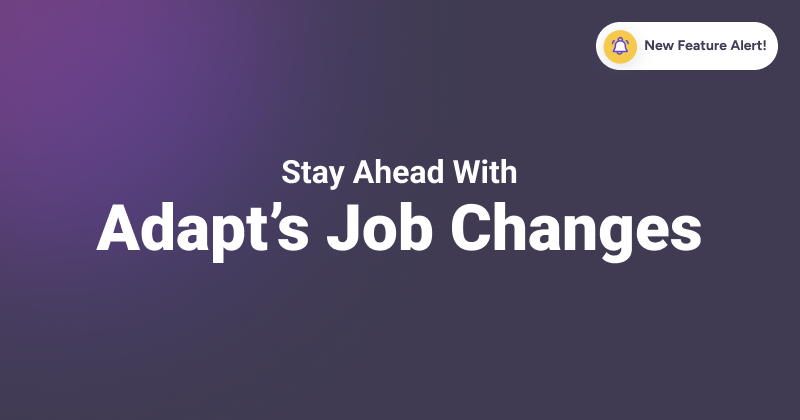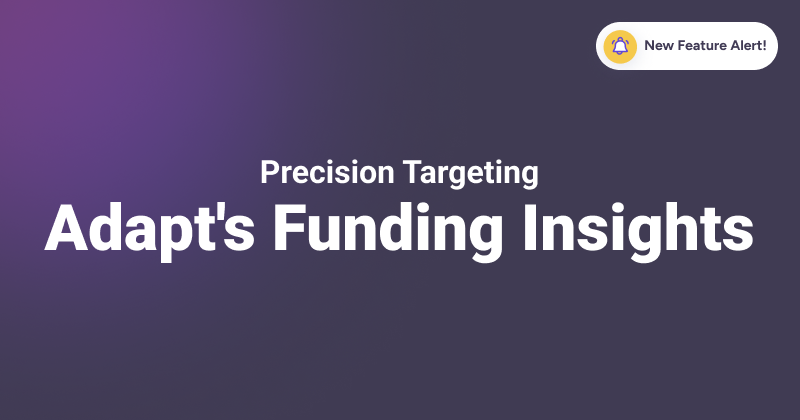Cold calling has long been a staple for any business, renowned for its challenging nature yet undeniable effectiveness in generating leads and securing sales. Remarkably, 82% of buyers are open to scheduling a meeting after receiving a cold call. This openness is even more pronounced when buyers are in active search of solutions, with 62% eager to engage with representatives who reach out proactively.
The success of cold calling is evident, as 75% of those contacted agree to either a meeting or participation in an event following an unsolicited call. The key to excelling in cold calling lies in the caller’s persistence and their skill in forging a connection with the potential client, underscoring the technique’s pivotal role in the sales process.
This blog unveils 21 essential cold calling tips designed to enhance your sales outreach efforts. Whether you’re a seasoned sales veteran or new to the game, These tips will equip you with the tools needed to break through the noise and connect with your audience.
What is B2B cold calling?
In business-to-business (B2B) transactions, cold calling involves sales development representatives (SDRs) initiating contact with key decision-makers to spark interest in their company’s products or services. This approach is termed ‘cold’ due to the unsolicited nature of the call and the recipient’s lack of anticipation for such communication.
B2B cold calling is strategic, predicated on a deep understanding of the target’s business and sector. It involves crafting a tailored pitch in advance, ensuring that when the potential client answers, the SDR is prepared to empathize with their challenges, ready to present a compelling solution, and propose a meeting to explore the matter further.
When comparing B2B cold calling to cold emailing, it’s interesting to note the preference. With 81% of B2B customers favoring effective emails over telephone interactions, face-to-face meetings, live chat, online forms, and social media platforms, cold emailing emerges as the preferred method of initial business communication.
B2B cold calling stands as a crucial strategy for sales teams, offering numerous advantages that can significantly enhance sales outcomes.
Here’s why it’s so effective:
Direct Engagement:
Cold calling in a B2B context creates an immediate connection with key decision-makers, allowing for direct and impactful sales discussions. This direct approach enables sales managers to present their offerings without relying on the prospect’s engagement with ad or cold email.
Instant Feedback:
The real-time nature of cold calls allows sales professionals to instantly assess a prospect’s interest, address objections as they arise, and tailor their pitch in response to the prospect’s feedback, offering a level of interaction not found in other outreach methods.
Customized Conversations:
B2B cold calls afford the opportunity to customize discussions, aligning the sales pitch with the specific needs and challenges of the prospect. This personalized approach positions the product or service as a valuable solution.
Relationship Foundation:
Initiating contact through cold calling can be the starting point for developing ongoing business relationships. Successful calls can progress to further exploratory discussions, product demos, and eventually, sales.
Flexibility and Scalability:
Cold calling can be easily scaled to match the size and needs of any sales team, providing a flexible and adaptable method for pursuing sales goals.
Opportunities for Improvement:
Every cold call, regardless of outcome, is a learning experience. Calls that don’t result in a sale still yield insights into effective engagement strategies, objection handling, and refining future efforts.
Market Insights:
Engaging with prospects over cold calls can unveil valuable market intelligence and customer challenges, informing broader team strategies including product development and marketing.
Adopting effective cold calling techniques and best practices can empower sales reps to leverage B2B cold calling fully. With a positive approach, a structured sales cold calling script, and a commitment to learning from each interaction, sales professionals can transform cold calling into a pivotal component of their sales arsenal.
How does one make a cold call?
Many organizations question the effectiveness of cold calling, often due to incorrect utilization. Cold calling thrives on contacting well-selected targets and meticulous preparation.
Here’s how to supercharge your sales calls with these 14 steps:
Clarify Your Call Objective:
Determine your goal before dialing – scheduling an appointment, closing a sale, qualifying a lead, or extending an event invitation. Stay focused on this aim throughout the call.
Do Your Homework:
Research is crucial. Use LinkedIn and other resources to understand your prospect’s role, achievements, and interests. Tailor your approach based on their background.
Enrich Your Contact List:
Utilize B2B databases to ensure you have up-to-date and accurate targeted lists, increasing the chances of connecting with the right person.
Leverage Mobile Numbers:
In a post-pandemic world, acquiring cell phone numbers is key, especially with more people working remotely. Verified databases can provide this valuable information.
Time Your Calls Wisely:
Identify the best times to call in your industry. Lunchtime can be ideal, especially for reaching decision-makers directly.
Navigate Past Gatekeepers:
Approach gatekeepers with confidence and minimal information. Aim to connect directly with the decision-maker.
Qualify Prospects During the Call:
Use the call to assess if your solution matches the prospect’s needs. Ask open-ended questions based on the BANT criteria (Budget, Authority, Needs, Time).
Make use of a cold call script:
Scripts guide the conversation flow but should not restrict natural dialogue. Customize your approach to each call.
Handle Objections Gracefully:
View objections as signs of interest. Address them with clear, insightful responses.
Adopt Remote Selling Tools:
Integrate tools like video messages or virtual meeting vouchers to enhance remote engagement.
Continuously Analyze and Adapt:
Track your call outcomes, refine your approach based on data, and test different strategies.
Engage with Open-Ended Questions:
Encourage prospects to share information by asking questions that foster dialogue, ensuring they lead the conversation.
Persist in Your Efforts:
Persistence is key. Regularly making calls increases your chances of success despite initial rejections.
Recognize When to Conclude:
If a prospect’s needs don’t align with your offering, respectfully end the conversation. Focus on those who can truly benefit from your solution.
By following these steps, you can greatly improve your cold calling sales technique, making each call more purposeful and potentially more successful.
21 cold calling tips to elevate your sales outreach
Here are 21 strategies to dominate your phone calls and secure more sales.
1.Prepare Your Questions Thoroughly:
Entering a cold call without a clear plan is a recipe for failure. Identify the key information you aim to gather and craft questions that will help you delve deep into your prospect’s needs, leaving no detail unexplored.
2.Move Beyond Scripts:
Approach each call with a clear strategy and understanding of the information exchange required, but avoid relying on scripts. This ensures your conversation remains dynamic and adaptable, enhancing its natural flow.
3.Utilize Adapt.io for Prospecting:
Adapt.io assists in enhancing sales by facilitating the discovery calls and engagement with qualified leads, offering a vast database for targeted prospecting.
4.Organize Your Sales Collateral:
You should have your sales collateral ready to share when you speak with prospects. Timeliness and relevance are key to advancing them through the sales funnel.
5.Strategize for Volume:
Develop a clear calling strategy, considering the volume of calls needed to meet your targets and allocating your time efficiently.
6.Pace Your Sales Approach:
Recognize that cold calling is a nuanced skill. Rushing can alienate prospective customer. Understanding and addressing their needs patiently can significantly enhance your success rate.
7.Persist Through Challenges:
Becoming a cold calling expert is notoriously difficult, filled with rejection. However, resilience and maintaining enthusiasm with each call can eventually lead to success.
8.Create Immediate Rapport:
Being polite and personable from the start can transform a cold call into a warm conversation, setting a positive tone for the interaction.
9.Monitor for Trigger Events:
Stay alert to significant changes in your prospects’ situations, which can present timely opportunities for your pitch.
10.Navigate Common Objections:
Familiarize yourself with typical objections and prepare data-driven responses to address them effectively.
11.Focus Fully on Your Prospect:
Respect your prospective customer’s valuable time by avoiding multitasking and distractions during calls, ensuring your full engagement. Make sure your device is up to speed. Clean up distracting files on the desktop they are in the way. Also, double-check your internet connection to avoid potential cuts during the call.
12.Maximize Email Tracking:
Utilize technology to gain insights into your prospect’s interests and behaviors. Tools like email address tracking can provide valuable pre-call information, enriching your approach.
13.Embrace Prospecting Tools:
Leverage AI and automated platforms to prioritize your leads effectively, allowing you to focus on the most promising prospects and streamline your sales process.
14.Craft an Engaging Cold-calling Opener Statement:
A well-prepared opening can captivate your prospect’s interest, setting the stage for a successful call.
15.Master the Art of Voicemail:
Leave compelling voicemails that prompt action, experimenting to find the most effective strategies.
16.Utilize Social Proof:
Highlight your clients’ successes to build credibility and interest, leveraging the persuasive power of social proof.
17.Time Your Calls Wisely:
Identify the best times for calling by understanding your prospects’ schedules and preferences, optimizing your chances of a successful connection. Data suggests the optimal times for sales calls are between 10-11:30 AM and at 1:30 PM, with Thursday being the most effective day to call.
18.Build Your Confidence:
Cold calling prospects can be daunting, but taking stock of your growth and improvements can bolster your confidence and motivation.
19.Address Call Reluctance:
Seek support and advice to overcome hesitancy in making calls, especially if you’re new to sales.
20.Leverage Your Personal Best Times:
Recognize your optimal times for making calls, aligning your schedule to when you’re most effective and personable.
21.Automate Routine Tasks:
Employ sales tools to handle mundane tasks, maximizing your time for more strategic sales activities and cold calling.
What makes a cold-calling strategy effective in 2024?
Cold calling, often seen as a daunting challenge fraught with rejection and frustration, is unexpectedly one of the most invaluable tools in a successful salesperson’s arsenal. Beyond its reputation as a rigorous lead generation method, it serves as an unparalleled training ground. It hones your communication skills, teaching you to engage effectively with those caught off-guard by your call, and to convert apathy or even outright resistance into genuine interest.
Moreover, when integrated with a comprehensive multichannel strategy that encompasses email and social selling, cold calling emerges as a powerhouse for lead generation and cultivating a high-quality pipeline.
The essence of cold calling is simple: to persuade the listener to take the next step. Your initial 10 seconds are there to capture interest for the next 30, where you unveil the purpose of your call. This, in turn, sets the stage for a minute-long pitch of your value proposition, ultimately leading to the crucial request for a meeting.
By recognizing cold calling as a sequence of incremental commitments rather than an attempt to close a deal outright, its role becomes significantly more manageable and fruitful.
Cold calling has stood the test of time for a reason. As buyer expectations evolve, emphasizing relevance and personalization in every interaction is key. This strategic approach transforms the cold call from a mere interruption to a valuable opportunity, turning strangers into engaged prospects and, eventually, into loyal customers.
Building a successful cold calling strategy is an art that blends meticulous preparation, tailored communication, and unwavering determination. It also requires a profound comprehension of both your offering and the market you’re targeting.
Here’s a step-by-step guide to crafting a cold calling strategy that delivers results:
Clarify Your Goals and Identify Your Audience
Goals: Set clear objectives for your cold calling activities, whether it’s scheduling meetings, generating leads, or direct sales.
Audience: Determine your Ideal Customer Profile (ICP), considering aspects like industry, company size, and the specific challenges your solution addresses.
Craft a Compelling Value Proposition
Uniqueness: Pinpoint and be ready to concisely communicate what sets your product or service apart.
Benefits: Highlight the advantages your offering brings to the prospect, focusing on benefits over features.
Develop and Personalize Your Script
Scripting: Create a script as a conversational blueprint that includes an introduction, your offer, and rebuttals to potential objections, but keep the dialogue fluid.
Personalization: Do your homework on prospects using resources like LinkedIn and their company website to tailor your pitch.
Embrace Active Listening
Engagement: Pay close attention to the prospect’s replies to adapt your pitch and meet their unique needs directly.
Strategize Your Follow-Up Call
Persistence: Understand that converting prospects might require multiple contacts. Develop a follow-up meeting plan that respects their boundaries.
Leverage Technological Tools
CRM Use: Employ CRM software to organize your outreach, tracking each interaction.
Analytics: Utilize call analytics to uncover successful patterns and optimal call times.
Focus on Training and Adaptation
Skill Building: Regularly train your entire team to finesse their calling approach.
Iterative Improvement: Continuously refine your strategy based on feedback and performance analysis.
Establish Goals and Track Performance
Goal-Setting: Motivate your team with realistic targets.
KPI Tracking: Monitor indicators like call-to-appointment ratios and conversion rates to gauge effectiveness and pinpoint areas for enhancement.
A dynamic cold calling strategy that adapts to feedback and market trends can significantly improve your outreach’s success rate. By deeply understanding your target audience, refining your message, and leveraging data-driven insights, you’ll be well on your way to amplifying the impact of your cold calling efforts.
Key takeaways
Cold calling is the practice of contacting potential customers by phone who haven’t shown prior interest in your services or products. Despite some skepticism surrounding its effectiveness, the benefits of cold calling cannot be ignored.
Key Takeaway #1: Preparation is Key:
Effective cold calling begins with meticulous preparation. This entails researching your prospects, understanding their industry challenges, and customizing your pitch to meet their specific needs and concerns. Being well-prepared not only boosts your confidence but also enhances the chances of receiving a favorable response.
Key Takeaway #2: Customize Your Communication:
Tailoring your approach can markedly boost your cold calling success. Leverage the insights from your preparatory phase to individualize your discussions, showing your prospects that you’ve invested time to understand their business. This strategy fosters rapport and maintains the prospect’s interest.
Key Takeaway #3: Emphasize Active Listening:
The importance of active listening cannot be overstated in cold calling. It involves attentive listening, comprehending, responding, and retaining what is being said by the prospect. Mastering this skill improves your ability to pinpoint and cater to the prospects’ needs more efficiently, thereby elevating the likelihood of transforming the call into a potential sale.
Key Takeaway #4: Navigate Objections Smoothly:
Encountering objections is a standard aspect of cold calling. The ability to address them elegantly and with assurance is critical. Familiarize yourself with typical objections and prepare thoughtful responses that alleviate these concerns and keep the dialogue flowing.
Key Takeaway #5: Persistence in Follow-Up:
The first cold call is usually just the start of the sales journey. Persistent follow-up is vital for cultivating the relationship and guiding the prospect through the sales pipeline. Whether it involves sending a thank-you note, providing additional information, or arranging a subsequent meeting, consistent and considerate follow-up efforts can significantly amplify your rate of success.
Key Takeaway #6: Embrace Technology and Data Analytics:
The integration of technology and data analytics into cold calling strategies is more crucial than ever. With the vast majority of data available, sales teams can now leverage predictive analytics to identify the most promising prospects, perfect time, avoiding bad times, and personalized engagement strategies. Tools such as CRM systems and AI-driven analytics platforms enable salespeople to understand their prospects’ business needs, challenges, and behaviors at a granular level. This data-driven approach not only increases the efficiency and effectiveness of cold calling efforts but also allows for a more personalized and consultative sales approach. By embracing technology, sales teams can move beyond the traditional spray-and-pray method, focusing their efforts on high-quality leads that are more likely to convert, thereby significantly improving their success rates and ROI from cold calling activities.
Key Takeaway #7:Prioritize Personalization and Relevance:
The significance of personalization and relevance in cold calling cannot be overstated. In 2024, B2B buyers expect interactions with salespeople to be tailored to their specific needs and challenges. This means that generic pitches are no longer sufficient. Sales professionals must invest time in researching their prospects, understanding the unique aspects of their business, and crafting messages that resonate with their specific situation. This level of personalization demonstrates to prospects that the salesperson values their time and has a genuine interest in helping them solve their problems. Additionally, relevance is key; ensuring that the solution being offered aligns closely with the prospect’s current needs and business objectives. Personalization and relevance together make for a compelling sales approach that is more likely to engage prospects, build trust, and pave the way for meaningful business relationships.
Despite its challenges, cold calling remains an exciting and varied tactic that adds vibrancy to your sales approach. Remember, skilled cold callers are incredibly valuable, so never stop refining your craft. For those looking to elevate their game and connect with more prospects effectively, don’t miss out on exploring Adapt.io as your secret arsenal. Dive in now and transform your cold calling strategy!


